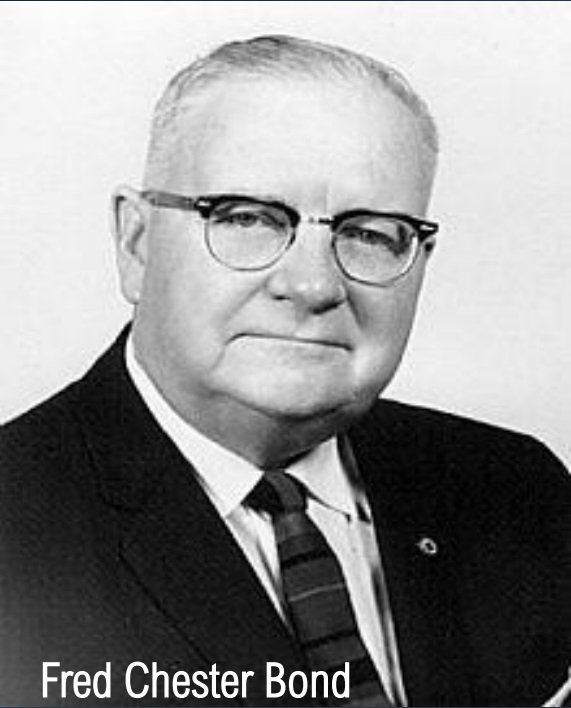In 1962, at the first international milling convention in Frankfurt am Main, Professor Bond revealed to the world his hypothesis of particles comminution by the method of rupture.
He proved that it is much more efficient to expose the rock particles to tearing, compared to compression. He noted that traditional to this industry compression method spend on the result almost a thousand times more energy than it is required by use of stretching.
Enormous benefits can be regained by developing an industrial comminution method, which is using rupturing rock particles by the direct use of breaking stresses.
On industrial equipment, crushing almost never occurs by direct stretching (rupture).
For major contributions to increased knowledge of crushing and grinding processes and for achievement in industrial application of this knowledge to advancement of the milling industry Fred Chester Bond got the AIME Robert H. Richards Award in 1965 and was included into the National Mining Hall of Fame.

KELNIG technology is based on Fred Chester Bond’s research and utilizes a reaction chamber, in which the particles of raw materials are grinded in the oncoming rock particles flow. It eliminates the traditional to the milling industry particles compression, lining, inert gases and liquid formation.
Initial micro cracks in feedstock pieces are formed in the primary reaction zone while in flow by it’s acceleration in the electromagnetic field. The subsequent process leads to destruction of pieces of raw materials into fine particles. All zones of the reaction chamber are communicated, and are in a single cavity, separated by a difference in pressure. The crushed product is released from cavity of the reaction chamber in the form of dust-air mixture, and enters collector cavity. Energy in this process is spent on rotation of the working parts of the device where the pieces rocks can self-destruct. The KELNIG technology creates a destructive environment that lessens the mineral’s resistance and durability.
The process can be tuned to achieve the size of the final particles up to +/- 1 micron and the whole process is done without separator usage and additional finer grinding. For the particles size of +/- 20 micron (D100) the power usage is up to 7.5 kW per tonn of raw material, for the particles size of +/- 1 micron (D100) – up to 10 kW per tonn of raw material.

Since 2009 we have done 8 extensive research stages for different types of unconventional milling and accumulated vast knowledge of where the KELNIG grinding technology can be used best. After 11 years of research, more than 1000 experiments and 3 prototypes we are certain that our technology is working and are able to demonstrate it.
